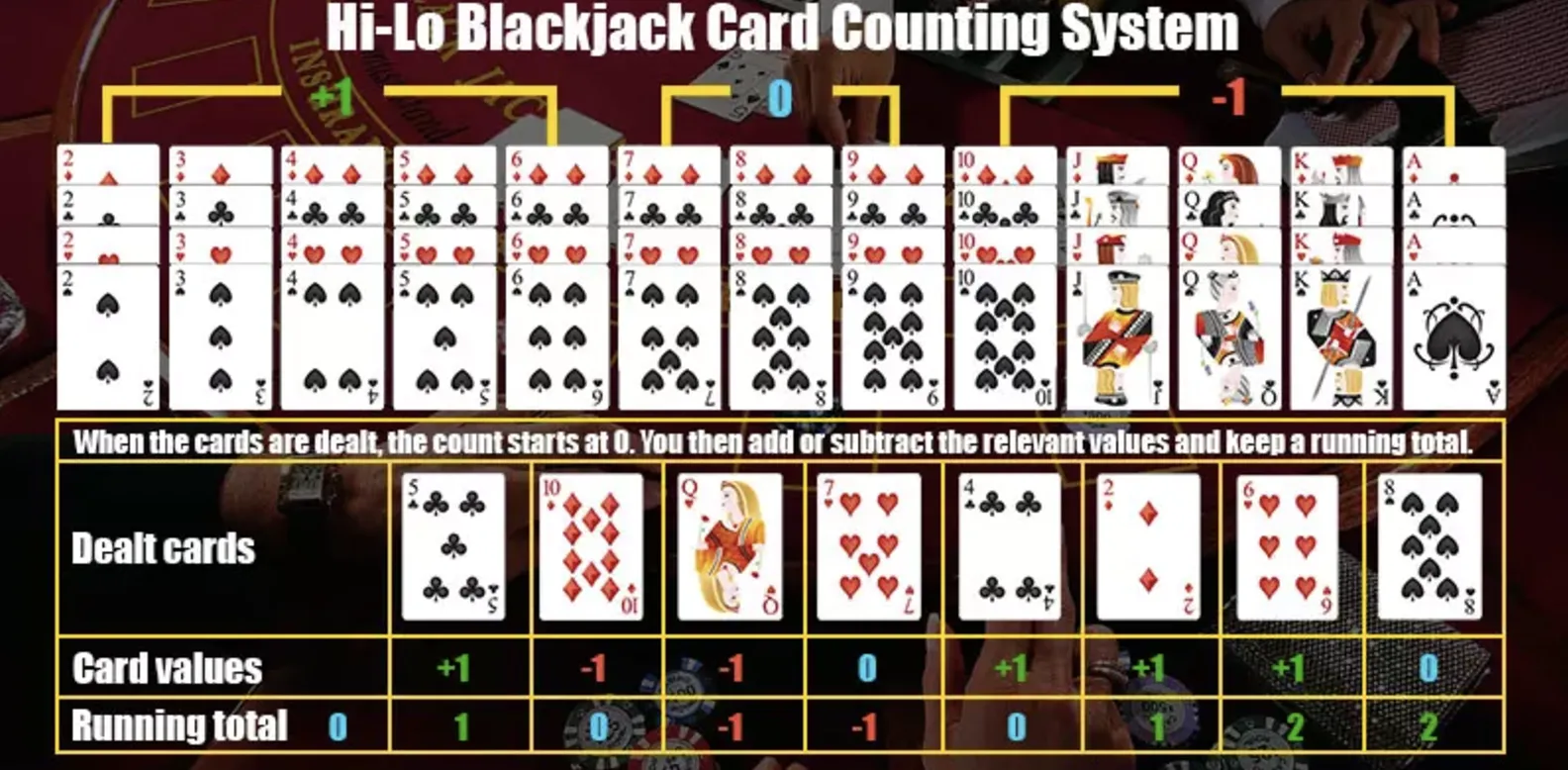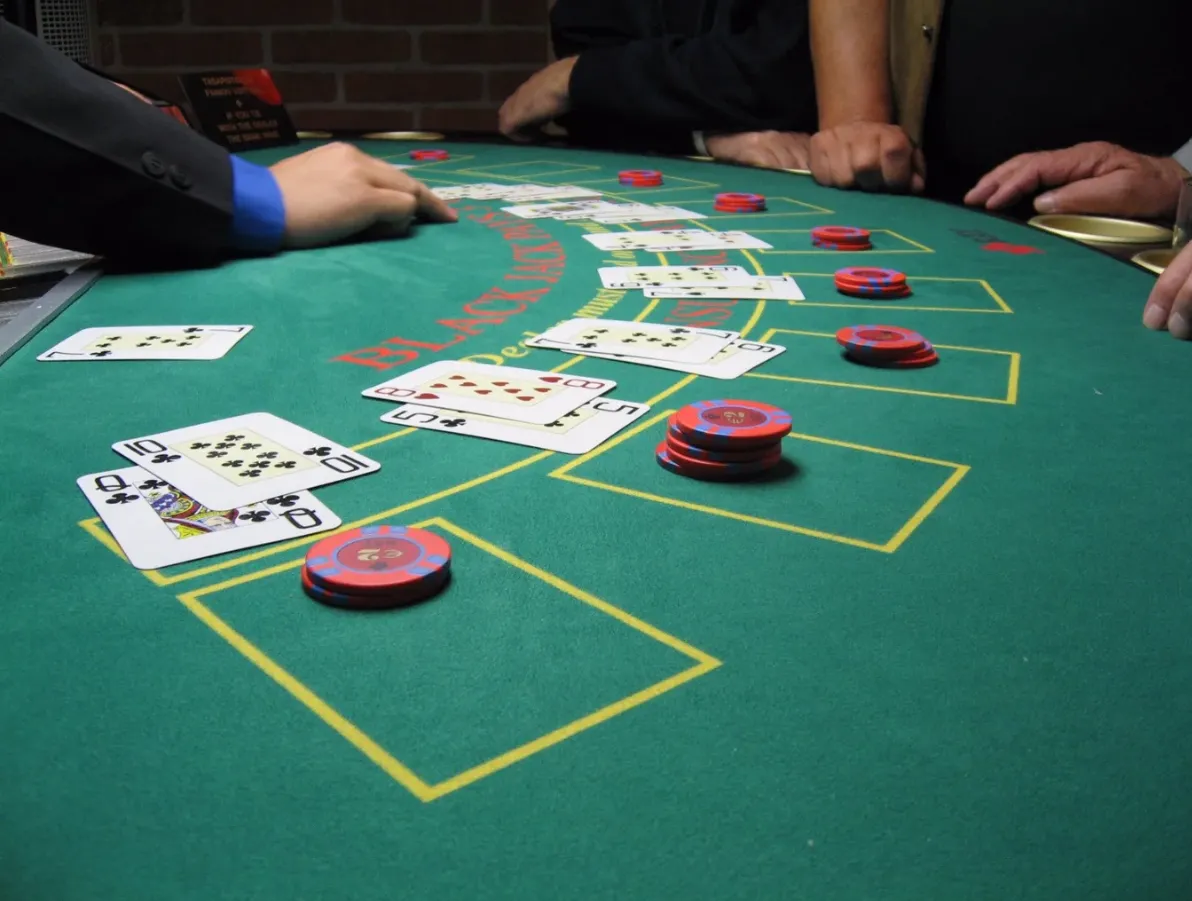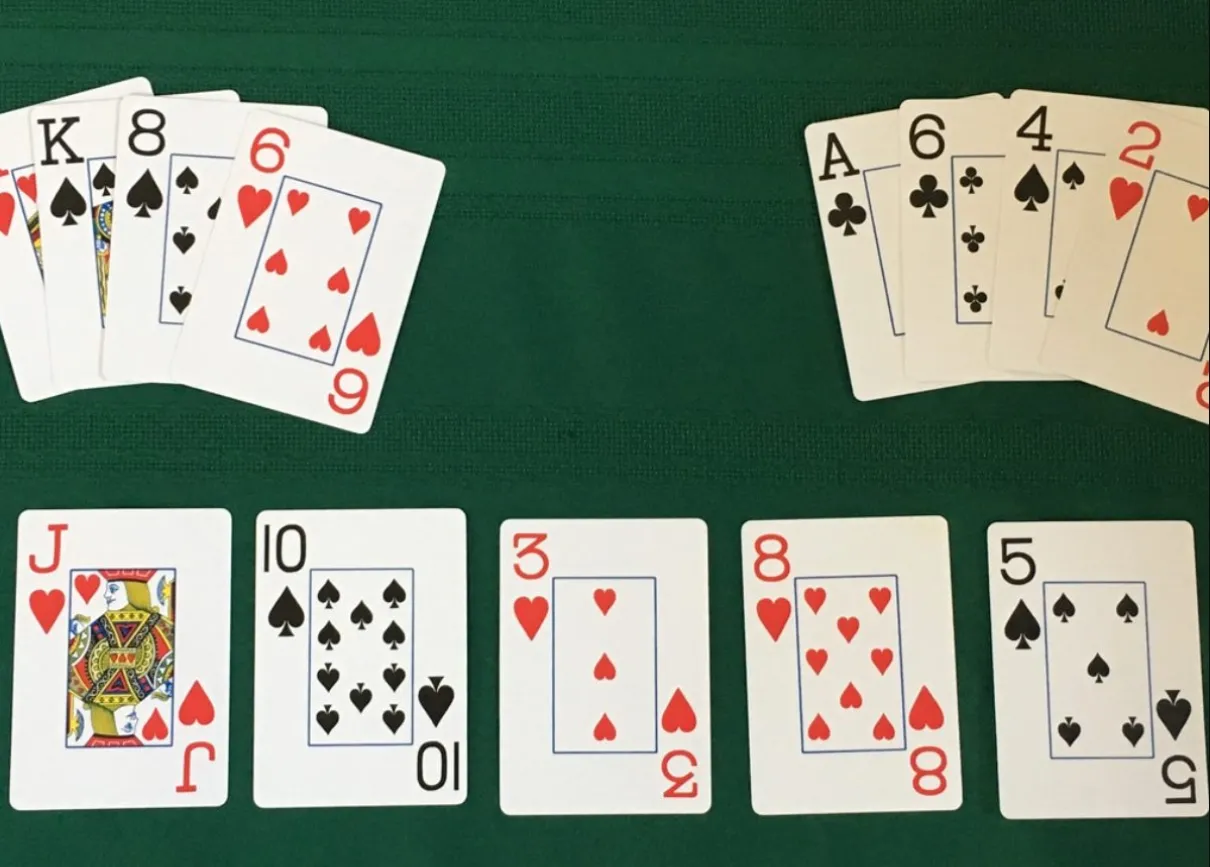Overview of basic card counting strategy Hi Lo Blackjack
Blackjack card counting is one of the most common methods used by players to increase their chances of winning. Among the various card counting systems, the Hi-Lo method is one of the leading ones due to its simplicity and efficiency. This system is based on the classification of cards into high and low cards. Knowing the basic strategy of card counting in the Hi Lo system allows players to make more confident game decisions and, as a result, increase the chances of success. By utilizing the Hi Lo Blackjack method, players can significantly improve their game.
A Quick Guide to Counting Cards with the Hi-Lo System
The Hi Lo system divides cards into three categories: low (2-6), neutral (7-9) and high (10, jack, queen, king, ace). Each category is assigned a certain value: low cards are assigned +1, neutral cards are assigned 0, and high cards are assigned -1. The player starts from zero and keeps track of each card dealt, totaling the points to have an idea of the ratio of high to low cards remaining in the deck.
When the tally in Hi Lo Blackjack is positive, it indicates that there are more high cards left in the deck, which is favorable for the player. In such cases, it is recommended to increase the bets. In the case of a negative count, indicating a predominance of low cards, it is better to reduce bets or make more cautious decisions.

The Role of Accuracy and Speed in Effective Card Counting

Accuracy and speed are critical factors in a card counting strategy. Counting should be conducted throughout the entire playing session, and the player must be able to quickly and accurately update his count during the hand. Errors in counting can lead to loss of advantage and possible losses.
In addition, the ability to react quickly and adapt to changes in the deck in Hi Lo Blackjack allows a player to utilize their bets more effectively. Complex situations can require instant decision-making, and only players who can think and react at the same time will be able to make the best use of this information.
Advanced Hi Lo Counting Techniques
For experienced players, the High-Low system in Blackjack can be further enhanced by various advanced techniques. One such technique involves using counting variations such as “double counting”, where the player takes into account additional information about the presence of certain cards in the deck. A “pre-counting” technique can also be used to estimate in advance the possible outcomes of games for certain bets.
The use of statistics and analysis in Hi Lo Blackjack helps to deepen the understanding of probabilities and greatly increase the effectiveness of the strategy. These techniques require higher skill levels and can be more difficult to learn, but by using them, experienced players can greatly increase their chances of success.

Practice Drills to enhance your card counting skills
Improving your card counting skills in Hi Lo Blackjack requires regular practice. It is recommended to use various practice drills, such as playing with a regular deck of cards where players can count on their own. You can also use special applications and software that simulate the game of blackjack and allow you to practice counting cards in conditions close to real life.
Another way to practice is to play against your buddies or participate in online games. Playing together can help you learn skills more effectively and spot counting errors that can occur in stressful situations.
Maximizing advantages through team play
Team play can greatly maximize the chances of success when using card counting strategies. In the case of Hi-Lo Blackjack, organizing a team of players working together allows for more efficient distribution of card counting information and minimizes risk. One player can focus on counting while the others take positions at the table, increasing or decreasing their bets depending on the count.
It is also important to note that the team can utilize different roles, such as an observer who keeps track of the cards and relays information to the players at the table. These strategies, while requiring more interaction, can lead to greater winnings.
The Significance of Deck Penetration in Card Counting

Deck Penetration is a term that describes how many cards have been dealt from the deck before a player begins counting. This value has a significant impact on card counting, as the more cards that have been dealt, the more accurate blackjack Hi Lo counting cards becomes. If the deck is opened to the end, it allows the player to more accurately estimate the ratio of the remaining high and low cards.
Therefore, players are advised to pay attention to the degree of deck penetration and adapt their strategies accordingly.
Understanding Deck Penetration and Its Importance
Understanding deck penetration helps players to avoid overloading and to assess their realistic chances of winning. The worse the deck penetration, the worse the potential stakes will be. It is also important for risk assessment: if a player knows that high cards are about to be played, he can adapt his Hi Lo strategy blackjack more successfully.
Understanding this concept requires in-depth analysis and experience, but with the right approach can lead to significant High Low blackjack winnings.
How Deck Penetration Influences True Count and Betting Strategies
Deck penetration directly affects the true count and betting strategies used. If penetration is good, players can more calculatedly increase their bets based on a positive count. However, when penetration is poor, it is important to be careful not to overestimate the advantages.
Each player should adapt their Hi Lo Blackjack playing conditions based on deck penetration to minimize risk and maximize their winning chances. It is important to take every aspect of this information as part of an overall strategy and make decisions taking into account all factors affecting the odds of winning.


